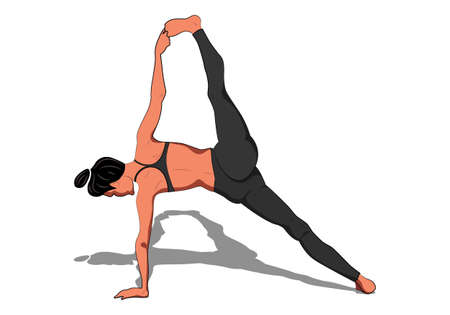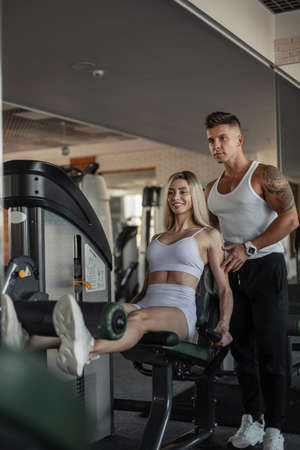Understanding Pilates: A British Perspective
Pilates, a practice that has found its way into gyms and studios across the UK, is more than just a fitness trend—it’s a holistic approach to movement and well-being. Originally developed by Joseph Pilates in the early 20th century, this method focuses on controlled movements, breathwork, and alignment. For many in Britain juggling busy work schedules, commuting on packed trains, or spending long hours at desks, Pilates offers a practical solution to everyday physical strains. Its emphasis on improving posture is particularly relevant in a nation where sedentary lifestyles are common. Whether you’re navigating the cobbled streets of York or spending hours behind a laptop in London, maintaining good posture can make daily life more comfortable. Additionally, Pilates promotes mobility and flexibility—key for everything from walking the dog in the park to keeping up with grandchildren. Importantly, Pilates also provides tools to manage stress, which resonates deeply in contemporary British life. With mindfulness woven into every session, it encourages a calm focus that can help offset the pressures of modern living. In essence, Pilates is perfectly suited for those seeking balance, resilience, and improved well-being within the unique rhythms of British life.
Essential Kit: What You Really Need in the UK
Starting Pilates at home neednt be an expensive or space-consuming affair, especially when navigating the unique realities of British living—think compact flats, unpredictable weather, and a penchant for practicality. Here’s a concise guide to assembling your Pilates kit using affordable options from familiar UK retailers, as well as some tips for maximising limited space.
Must-Have Equipment for Beginners
| Item | Why It Matters | Where to Buy in the UK | Space-Saving Tip |
|---|---|---|---|
| Pilates Mat | Cushions joints, provides grip on carpet or hardwood | Argos, Decathlon, Sports Direct | Opt for a roll-up mat with a storage strap; tuck behind furniture |
| Resistance Bands | Adds gentle resistance without bulky weights | Tesco, Amazon UK, John Lewis | Store in a drawer or small basket |
| Pilates Ball (Mini) | Helps with balance and core activation; very portable | Sainsbury’s, Boots Online, TK Maxx | Deflate after use for easy storage in cupboards |
| Pilates Ring (Magic Circle) | Great for toning inner thighs and arms with limited space needed | Argos, Decathlon, Amazon UK | Hang on a coat hook or inside wardrobe doors |
Bargain-Hunting and Sustainability Tips
- Shop sales or second-hand: Check local Facebook Marketplace or charity shops for gently used equipment.
- Sustainable swaps: Consider cork or recycled-material mats from eco-focused brands like Yogamatters UK.
- Loyalty points: Use Tesco Clubcard or Nectar points at partner retailers to save even more.
Tackling Weather and Limited Space the British Way
If you’re working out in a smaller flat or terrace house, prioritise multipurpose gear. A sturdy chair can double as a support for standing exercises. For those inevitable rainy days, clear a patch of living room floor—just enough space to lie down comfortably—and keep your kit handy in a decorative basket. Investing in non-slip mats is also wise if you have wood floors prone to chilly drafts.
The Bottom Line: Keep It Simple and Local
Your beginner Pilates set-up doesn’t require a full studio overhaul. Stick to the basics above and seek out reliable British retailers—this keeps things affordable while supporting local businesses. With just a few thoughtful purchases and clever storage solutions, you’ll have everything needed to build a sustainable practice right at home, whatever the weather outside.

3. Getting Started: Beginner Moves for Everyday Brits
Starting your Pilates journey at home is both accessible and rewarding, no matter if you live in a compact London flat or a cosy countryside cottage. Here’s a step-by-step guide to beginner-friendly Pilates exercises that suit the British lifestyle—perfect for rainy days indoors or as a gentle addition to your daily routine.
Step 1: The British Roll Down
Stand tall, feet hip-width apart (imagine you’re queueing at the local shop). Inhale, then slowly roll down vertebra by vertebra, letting your head and arms hang towards your toes. Pause, take a gentle breath, then roll back up. This move helps improve posture—ideal after hours spent at the desk or the telly.
Step 2: Seated Arm Circles
Sit comfortably on a mat, perhaps with a cuppa nearby. Extend your arms out to the sides. Make small circles, gradually increasing their size. Reverse direction after several breaths. This simple motion loosens shoulders stiffened by chilly British weather or long commutes.
Step 3: Tabletop Leg Lifts
Lying on your back, bring knees above hips with shins parallel to the floor—like balancing a plate of scones! Engage your core and gently lower one foot towards the ground, then return and repeat with the other leg. This strengthens the lower back and abdominals without straining joints—suitable for all ages.
Step 4: Side-Lying Clamshell
Lie on your side with knees bent, heels together. Keeping feet touching, lift the top knee as high as comfortable before lowering it again. Picture yourself relaxing on Brighton beach as you work those hip muscles—great for stability and mobility, especially if you enjoy walking in UK parks.
Tips for Success
Pilates can be integrated into any routine—start with these basics two to three times a week. Listen to your body and progress at your own pace; there’s no rush (this isn’t a sprint through Oxford Street!). Remember, consistency is key to feeling stronger and more flexible in everyday British life.
4. Building Habits: Fitting Pilates into a British Schedule
Establishing a regular Pilates practice can be transformative, but integrating it into the rhythms of British life requires a thoughtful approach. Whether you’re an early bird sipping your morning cuppa or a city commuter dashing for the Tube, there are practical strategies to make Pilates a sustainable part of your routine.
Tailoring Pilates to Your Daily Rhythm
British schedules vary widely, from tranquil countryside mornings to the fast-paced tempo of urban living. The key is to identify windows of opportunity that suit your lifestyle. Here’s a comparative guide:
| Lifestyle | Ideal Pilates Slot | Practical Tips |
|---|---|---|
| Early Risers with Tea | Before breakfast, post-tea ritual | Set out your mat the night before; try gentle stretches while listening to Radio 4 or catching the weather forecast. |
| Busy Urban Commuters | Short sessions before/after work or lunchtime breaks | Utilise online classes for flexibility; consider short routines (10-20 minutes); use office space for discreet stretching if possible. |
| Parents & Homebodies | Mid-morning or early afternoon during quiet moments | Involve family members; use child-friendly Pilates videos; create a dedicated space at home. |
| Retirees or Flexible Workers | Late morning or early afternoon | Join local community classes for social connection; coordinate sessions with friends for accountability. |
Making Use of Local Community Resources
The UK is rich in communal spaces and resources that support wellbeing activities. Many village halls, leisure centres, and local gyms offer beginner-friendly Pilates classes—often at convenient times and affordable rates. Libraries and community noticeboards frequently display class timetables. Don’t overlook the value of joining a neighbourhood group; not only does this foster motivation, but it also connects you with fellow beginners on a similar journey.
Quick Tips for Habit-Building Success:
- Schedule It: Treat Pilates like any other essential appointment in your diary.
- Create Triggers: Link your session to established habits, such as after making your morning tea or upon returning home from work.
- Pace Yourself: Start with shorter sessions and gradually increase duration as confidence grows.
- Stay Flexible: If you miss a session, simply reschedule—no need for guilt, just consistency over time.
- Cherish Progress: Celebrate small wins, whether that’s improved posture on your daily walk or feeling more energised during the afternoon slump.
The British Advantage: Embracing the Everyday
The beauty of adopting Pilates within a British context lies in its adaptability. From historic parks ideal for outdoor practice to the camaraderie found in local classes, building this habit is about working with—not against—the unique features of daily British life. Start small, stay curious, and let each session become as familiar as popping the kettle on.
5. Pilates Etiquette and Community Spirit in the UK
Stepping into the world of Pilates in the UK, whether in a local studio or through online classes, comes with its own set of social cues and a unique sense of community. British Pilates culture places a premium on inclusivity, courtesy, and friendliness—values that help make beginners feel welcome and supported from day one.
Navigating Studio Culture
Most UK Pilates studios have an unspoken etiquette. Arriving a few minutes early is seen as respectful, giving you time to settle in and greet your instructor with a friendly “hello.” Wearing comfortable, modest clothing and bringing clean socks or grippy mats is standard practice. Instructors and fellow participants alike appreciate a quiet atmosphere before class begins, allowing everyone to prepare mentally.
Inclusivity at the Heart
The British approach to Pilates is notably inclusive. Classes are often designed for all abilities, and instructors encourage modifications without judgement. If you’re unsure about any movement, asking for guidance is welcomed—curiosity and learning are valued more than perfection. This spirit of encouragement extends across age groups and backgrounds, reflecting the UK’s diverse communities.
Online Classes: Bringing Pilates Home
With many Brits embracing remote exercise, online Pilates has flourished. It’s common to find virtual classes where participants exchange greetings in the chat box before sessions begin. Instructors foster connection by remembering names and celebrating milestones, whether it’s your first roll-down or mastering a new pose from your living room.
Fostering Community Spirit
Pilates in Britain isn’t just about individual progress—it’s about building bonds. Studios may host social events or charity fundraisers, inviting members to connect beyond the mat. Even online communities thrive on mutual encouragement, sharing tips and motivation via group chats or social media pages. The British value of friendliness shines through as practitioners support each other’s journeys, creating a warm atmosphere where everyone feels they belong.
6. Staying Motivated: Overcoming Typical British Barriers
Pilates may be gentle, but establishing a consistent practice can prove tricky—especially when faced with the unique hurdles of British life. Let’s address some common obstacles and explore practical ways to stay on track, even when the odds (and the weather) are against us.
Unpredictable Weather: Embracing Indoor Flexibility
We all know that planning anything outdoors in the UK is a gamble. If you’re tempted to skip your session because of drizzle or a sudden downpour, consider setting up a dedicated indoor space for Pilates. It doesn’t need to be fancy—a yoga mat in the living room will do. Online classes or YouTube tutorials can bring expert guidance straight to your home, making it easier to keep moving regardless of what’s happening outside.
Lack of Time: Making Pilates Fit British Schedules
The classic British workday and family commitments often mean self-care gets pushed aside. The key is to break up your Pilates routine into manageable segments—ten minutes in the morning before your first cuppa, or a short session after work instead of scrolling through your phone. Lunch breaks at home or even gentle stretches while watching EastEnders count towards your progress. Remember, consistency trumps duration.
Self-Consciousness: Overcoming Social Hurdles
It’s not uncommon to feel a bit awkward about starting something new—especially if you’re concerned about looking inexperienced in front of others. Many Brits share this quiet apprehension. To ease into group settings, try an online class first or invite a friend along for moral support. Local community centres and leisure clubs often offer beginner-friendly sessions where everyone is in the same boat. Rest assured, most people are too focused on their own form to notice yours!
UK-Specific Tips for Long-Term Commitment
- Make it social: Join a local class or start a small group with neighbours—it’s easier to stick with it when you’re accountable to others.
- Treat yourself: Celebrate milestones with small rewards, like new workout gear from a British brand or a post-class cup of tea.
- Weatherproof your routine: Always have an indoor option ready so rain never becomes an excuse.
A Final Encouragement
Adapting Pilates to fit your lifestyle—and accepting that British barriers are part of the journey—will make all the difference. Progress might be gradual, but every session counts towards improved wellbeing and confidence. Stay patient, stay persistent, and remember: even in the unpredictable British climate, your commitment can shine through.


